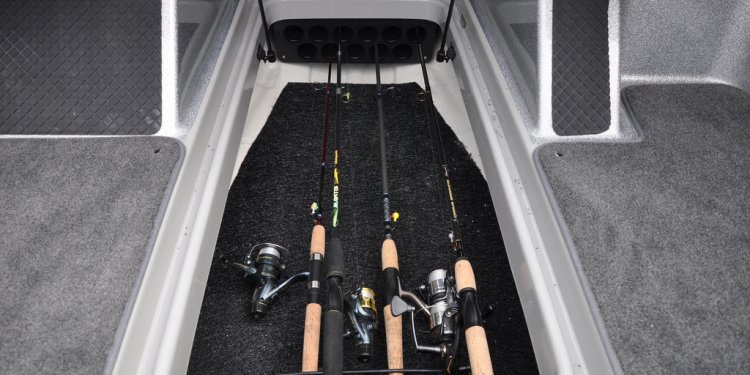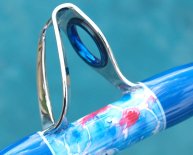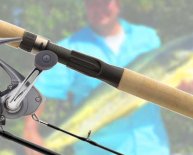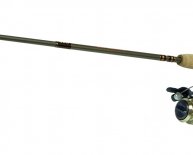
Fishing rod maintenance
Martin Joergensen - Roland Henrion
Today's fishing tackle hasn't been much better: sharp, super light rods, super-smooth reels with multiple ball-bearings, slick fly lines, braided PE outlines, you name it. Unfortuitously when it comes to angler, this high-tech equipment in addition includes an amount.
While many tackle is made of high-quality products like carbon, aviation quality aluminium, stainless and also titanium, we apply our sport in a dangerous environment: humidity, Ultraviolet exposure, severe temperatures, salt spray, dirt, sand, red coral... The fishing action is often dangerous and our valuable tackle gets knocked on boatdecks or jetties, scraped on rocks or dropped in sand. Even seafood press our rods and reels to extremes: a running sailfish is going to make your fly reel spin at speeds up to 5000 rpm... Imagine the heat build up in the bearings!
In spite the grade of design and material fishing equipment takes a beating every time we venture out truth be told there. Performs this suggest we shouldn't invest in costly tackle? Most certainly not. First because high quality tackle will usually outlast inexpensive things, and second, since it simply feels advisable that you fish with a beautifully crafted pole and reel. Through the years, having lived countless exciting moments together, a lot of us get emotionally attached with our favourite tackle and our key hope is usually to be able to pass it on to our children several years from today.
Luckily for us, you will find - mostly easy - methods to hold our fishing tackle in good shape and make certain years of fishing pleasure.
I'd like to share my fishing guide knowledge about you through this a number of ideas.
Rod care
Note: Rod maintenance has actually nothing at all to do with pole breakage. Anglers will always get a hold of how to break their particular rods, including common (vehicle doors) to plain stupid (standing about it) or just what some qualify as brave (while battling a massive seafood). Preventing pole breakage and rod restoration are other subjects that we will discuss another time.
- Avoid always to knock the pole against tough surfaces. Small scratches and nicks could cause rod damage.
- After fishing, wash your pole and dried out it with a smooth fabric before putting it into the sheath.
- Don't place a pole damp with seawater back in its sheath, as you will contaminate it with salt. If this can't be avoided for transport factors, clean the sheath carefully as quickly as possible.
- Never ever stow a rod with its pipe. This could easily capture moisture and cause corrosion of this guide bands. This will be specifically suitable for cane rods.
- At least twice a season or even more regularly whenever fishing in saltwater, inspect the rod bands with a magnifying glass or fall a wad of cotton through all of them. Small scratches will hold some cotton... and in addition harm the range that undergoes the ring. These rings should be changed straight away.
- Check if no water seeps beneath the wrappings and erode the guide ring feet. Once rust is seen, the ring should be replaced straight away.
- With cane rods, inspect the varnish frequently: if water can enter underneath the safety level, it may cause the bamboo to decay or even the pieces in order to become unglued.
- Wash the pole with lukewarm soapy liquid and a smooth sponge. A vintage tooth-brush will take away the dirt through the guide rings and reel seat.
- Obtaining cork grip to look like brand-new again is not hard. Just take some very fine, waterproof sandpaper (the main one useful for automobile paint jobs) and a bar of ordinary hand detergent. Damp the rod hold and sandpaper carefully. Utilize soap on the sandpaper and gently wipe the grip. Take care not to damage the pole it self or the reel seat. Rinse, allow dry and admire the effect.
- Small holes could be full of all-natural coloured lumber putty or with a mixture of cork filings and woodglue.
- Once the rod is clean and dry, spray it with plastic renovator or decorating squirt. You can easily use a rather light coating of fine oil regarding the reel seat.
- Avoid stucked ferrules by rubbing some parafin (or candle wax) from the male ferrules.
- The ultimate way to stow a pole over-long periods should hang it in its sheath on a nail or garments hanger inside a clothes. This is especially valid for cane rods: leave a cane rod tilting against a wall for an extended period and you may find out it'll be a little curved.

















